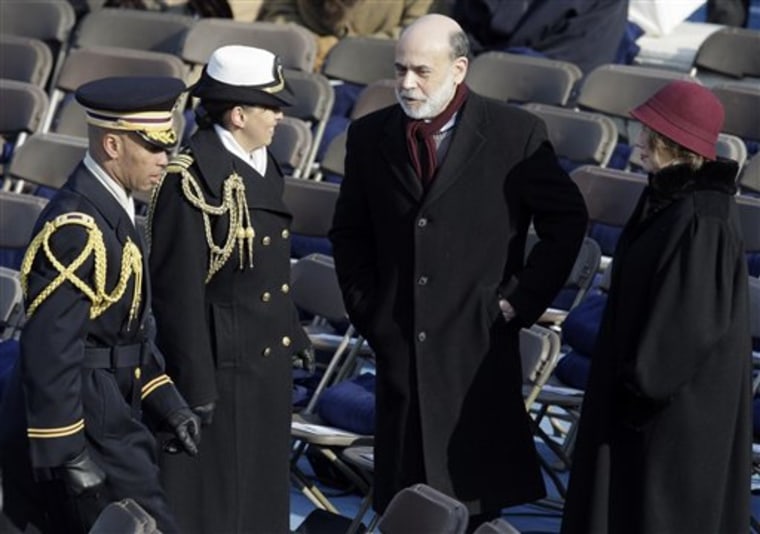With the country reeling from a recession, Federal Reserve policymakers are weighing what other tools they can use to brace the economy.
Fed Chairman Ben Bernanke and his colleagues wrap up a two-day meeting Wednesday, where they are all but certain to leave a key interest rate at a record low to provide relief. (A decision on rates is expected at around 2:15 p.m. ET.)
“They will hold rates down for a good long time and do everything they can to turn the economy around,” said Bill Cheney, chief economist at John Hancock Financial Services.
At the same time, the Fed could unveil new actions — or provide more clues as to its thinking — to deal with a stubborn trio of crises — housing, credit and financial.
The problems have fed on each other, aggravating the economic downturn, which is shaping up to be the longest since World War II. The nation’s unemployment rate has soared to a 16-year high of 7.2 percent, home foreclosures are spiking and Americans’ investments — including 401(k) and home values — are tanking.
At its previous meeting in December, the Fed took the unprecedented action of slashing its key rate from 1 percent to a new, targeted range of between zero and 0.25 percent. Economists predict the Fed will leave rates at that range through the rest of this year.
Despite the Fed’s aggressive rate-cutting campaign, a string of bold Fed programs and a $700 billion financial bailout program run by the Treasury Department, credit and financial markets are still stressed and far from normal.
To provide more help, one option is for the Fed to expand a program aimed at bolstering the availability of consumer loans.
Under the program, which is expected to start in February, up to $200 billion will be made available to spur auto, student and credit card loans as well as loans to small businesses. To do that, the Fed will buy securities backed by those different types of consumer debt. The Fed also hopes that action will lower rates on those loans. The program could be expanded in size or scope to provide financing for other types of securities, such as those backed by commercial mortgages.
The Fed also could expand another program — started at the beginning of this year, under which it is buying up to $500 billion in mortgage-backed securities guaranteed by Fannie Mae, Freddie Mac and Ginnie Mae to help bolster the crippled housing market. Mortgage rates have fallen in the wake of the program’s announcement late last year. The Fed also has agreed to buy up to $100 billion of Fannie and Freddie debt.
Another option is for the Fed to buy long-term Treasury securities.
The central bank has rolled out numerous programs since the credit and financial crises erupted in the summer of 2007. It is buying up mounds of companies’ short-term debt called commercial paper. It also is making cash loans to banks and has taken steps to bolster the mutual fund industry, investment firms and others.
William Dudley, who was promoted Tuesday to president of the Federal Reserve Bank of New York, is participating in the two-day Fed meeting. Unlike other regional Fed presidents, Dudley, 56, is a full-time voting member of the Federal Open Market Committee, the Fed’s policymaking body.
Meanwhile, President Barack Obama and Congress are racing to enact a $825 billion package of increased government spending and tax cuts to revive the economy, which has been in a recession since December 2007.
On Monday alone, tens of thousands of new layoffs were announced by companies including Pfizer Inc., Caterpillar Inc. and Home Depot Inc. The economy lost 2.6 million jobs last year, the most since 1945. Economists predict another 2 million or more jobs will vanish this year.
